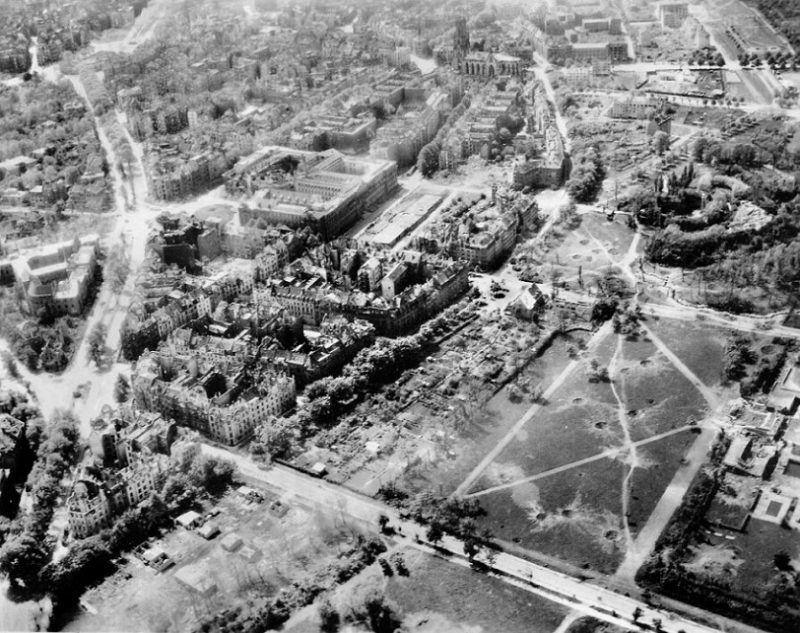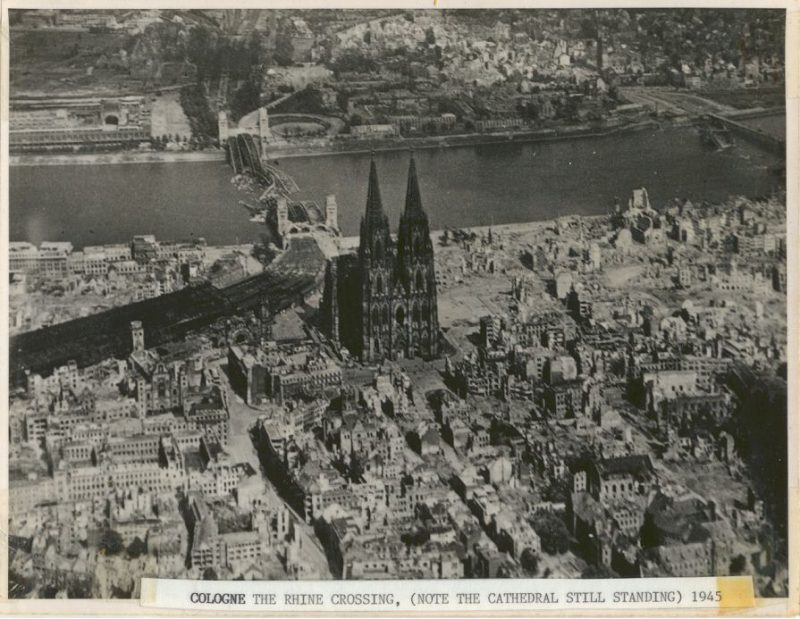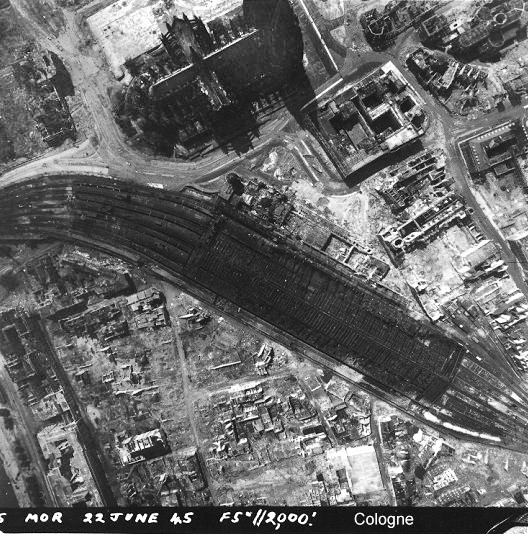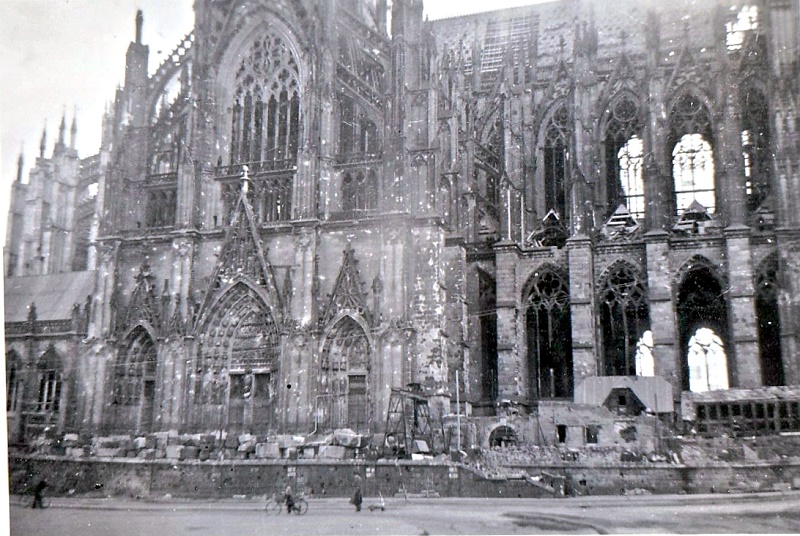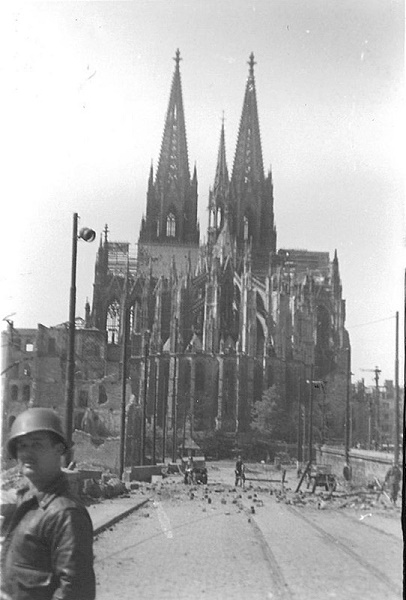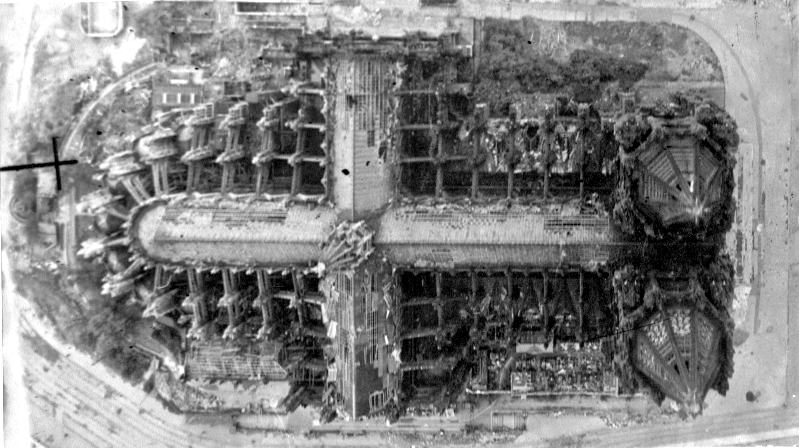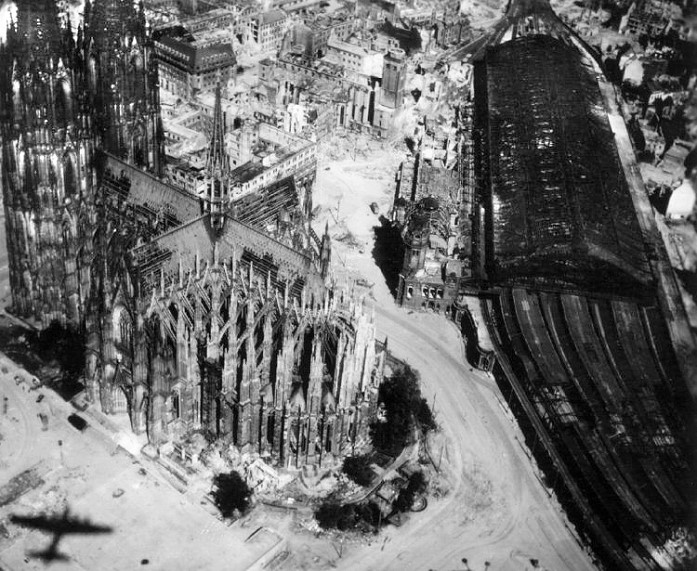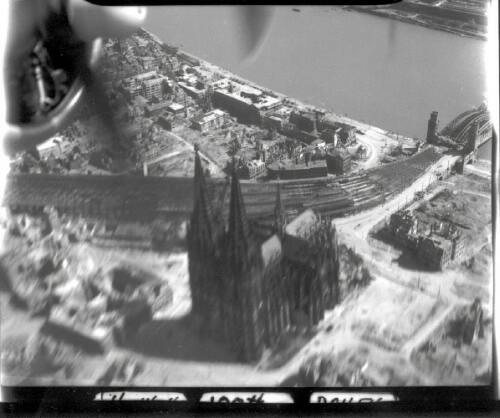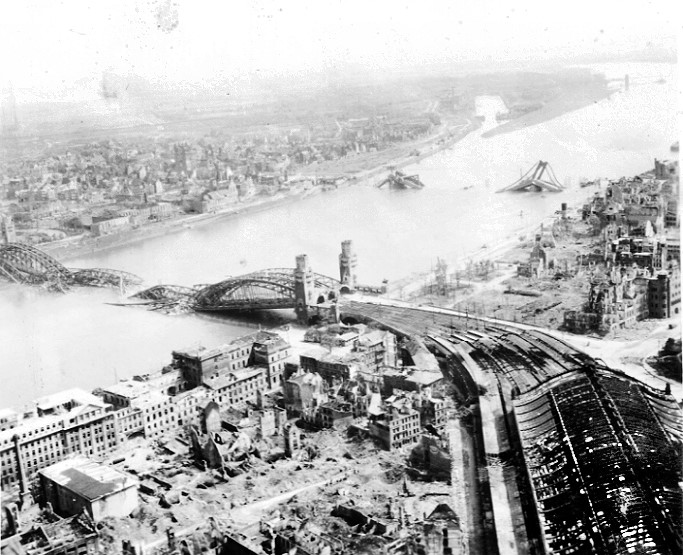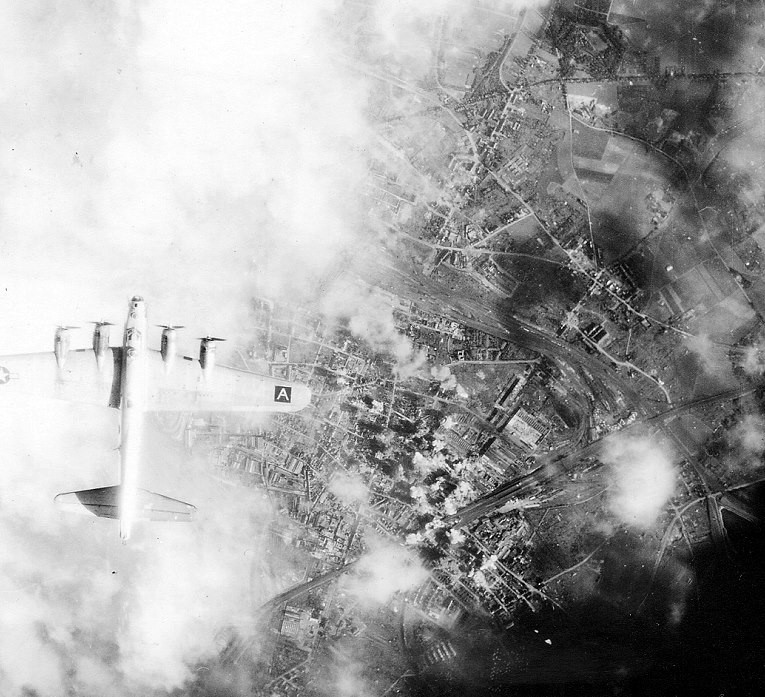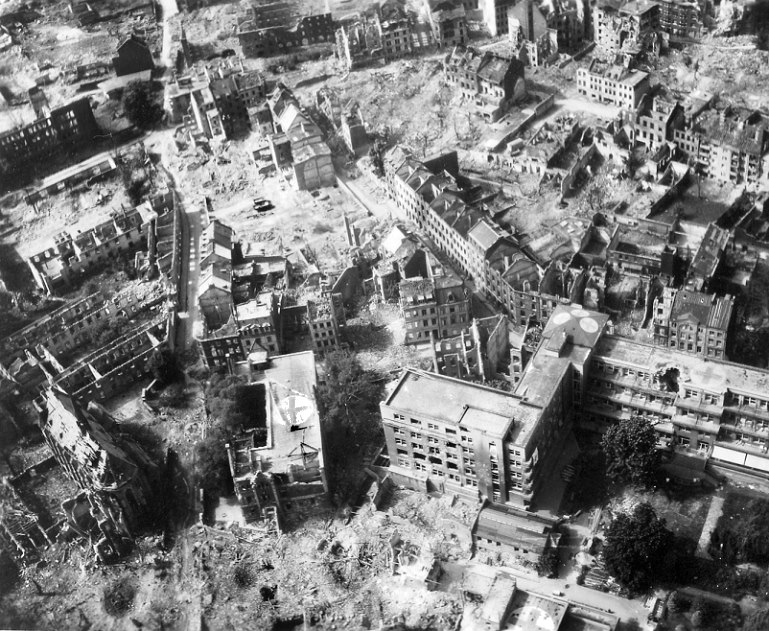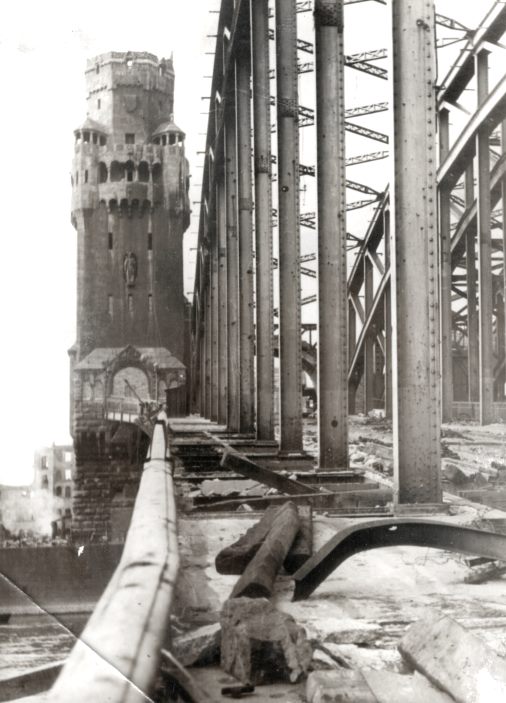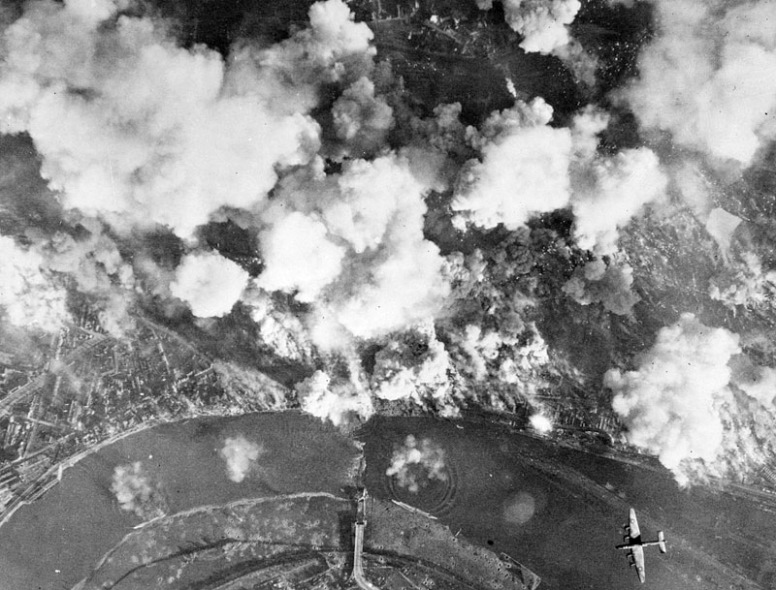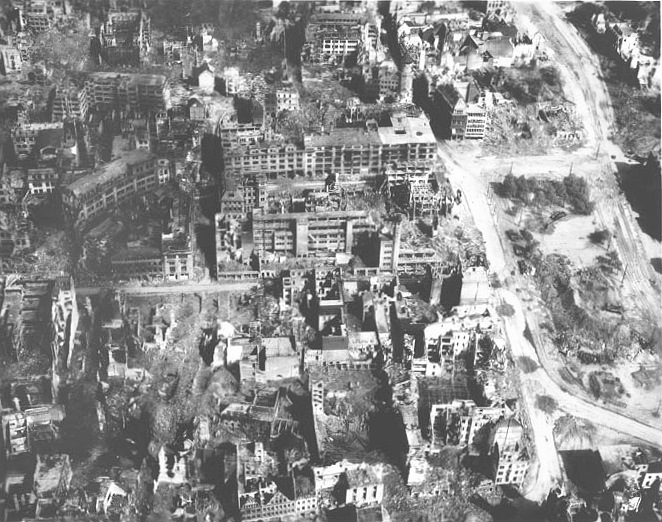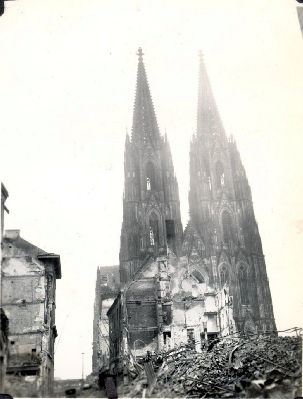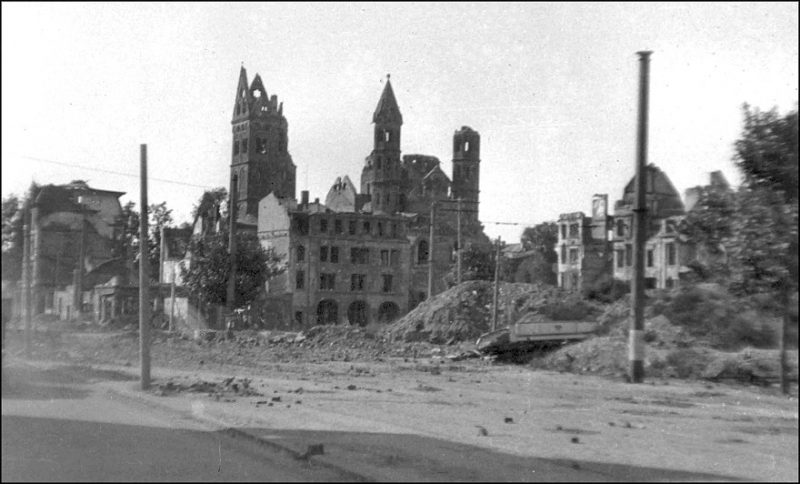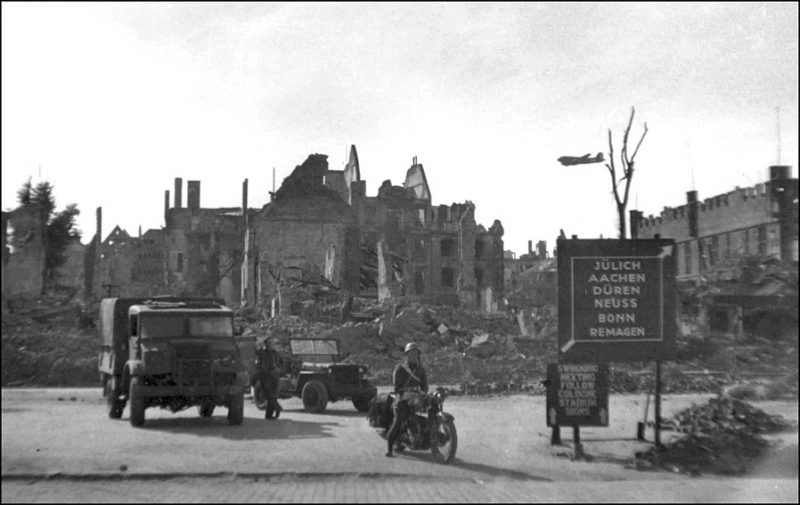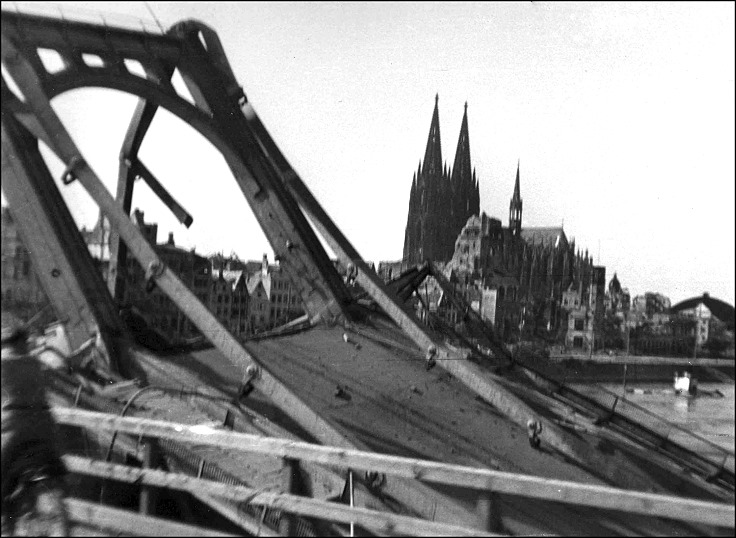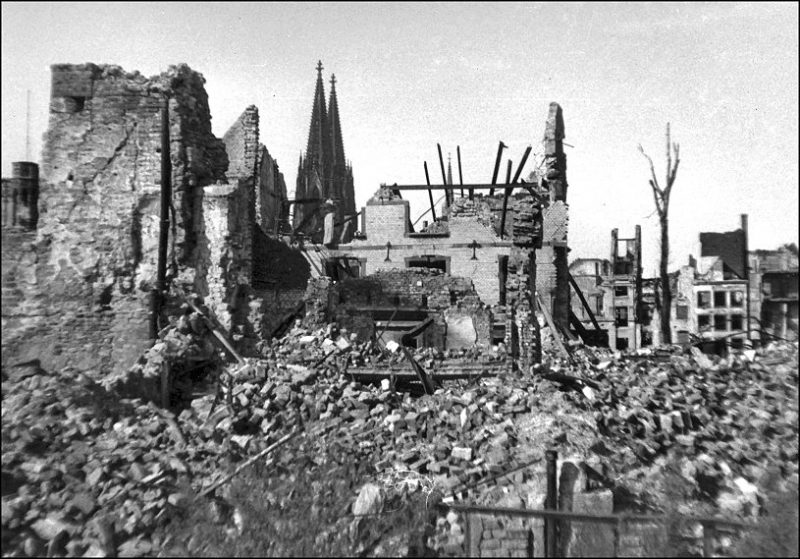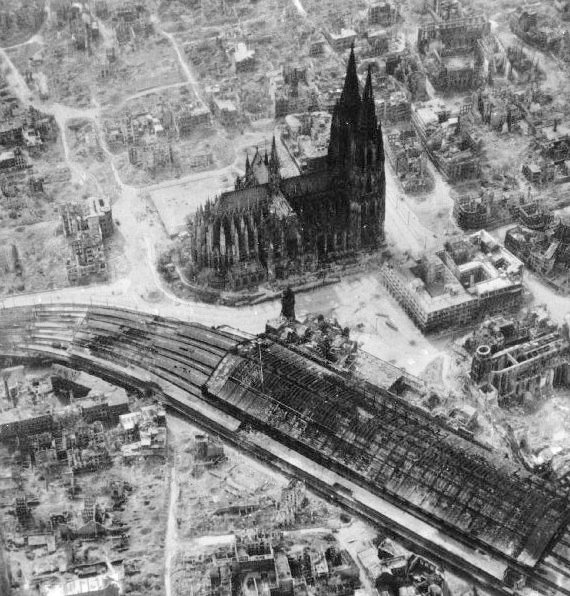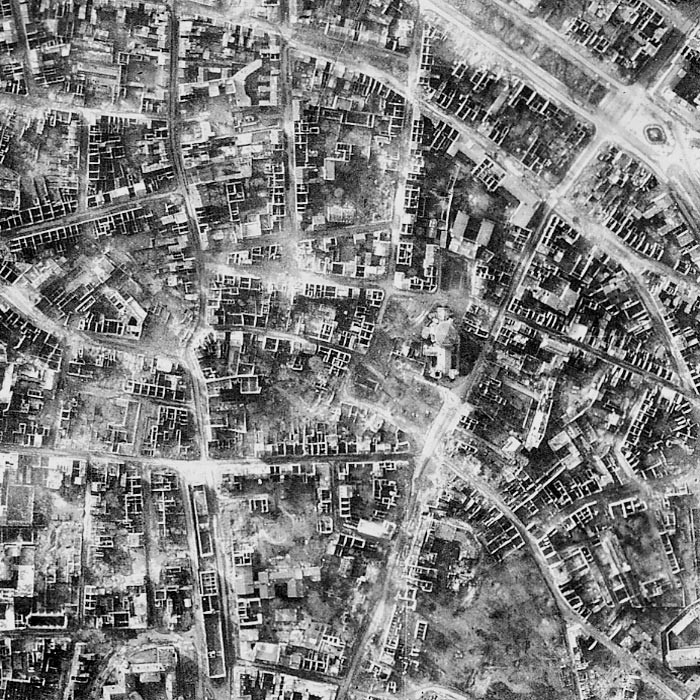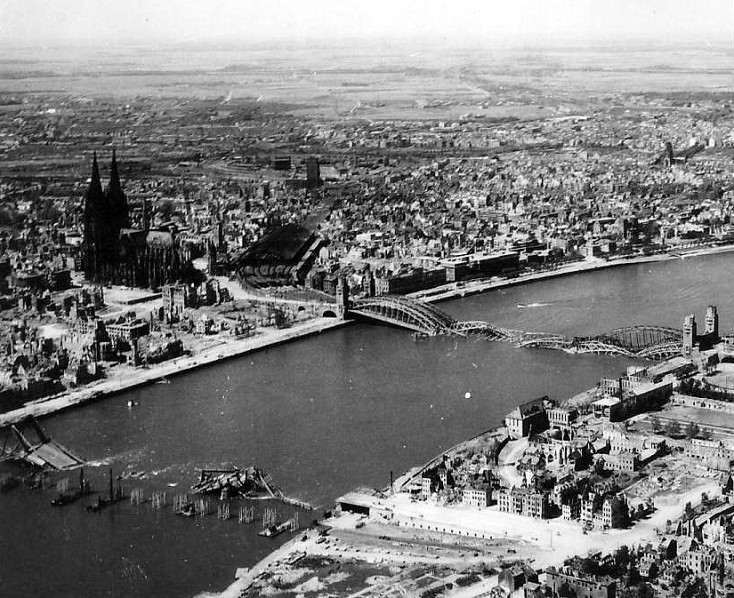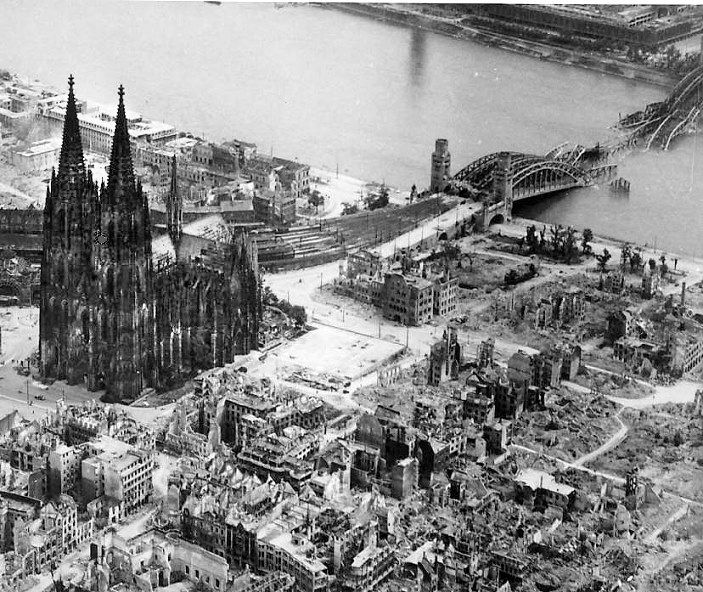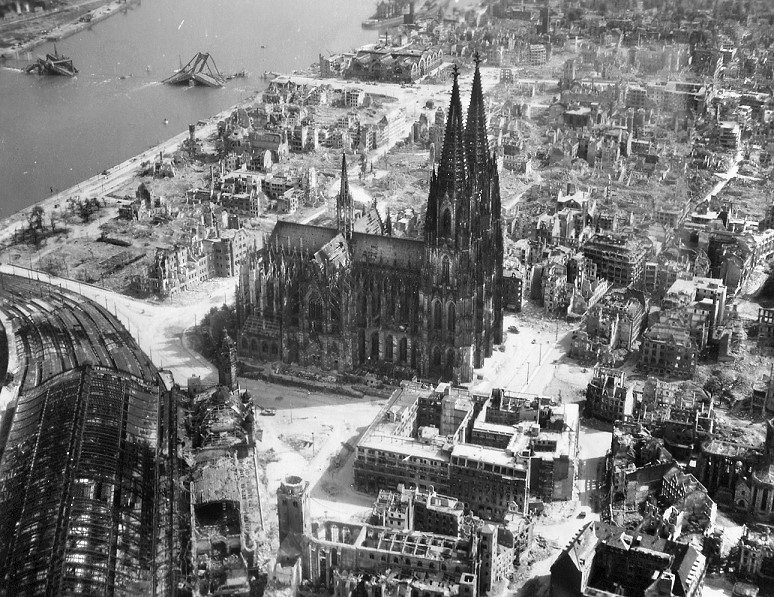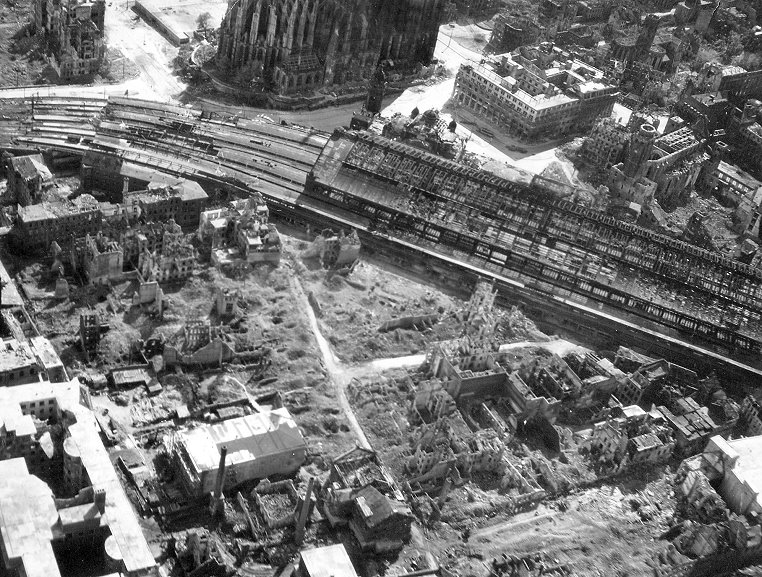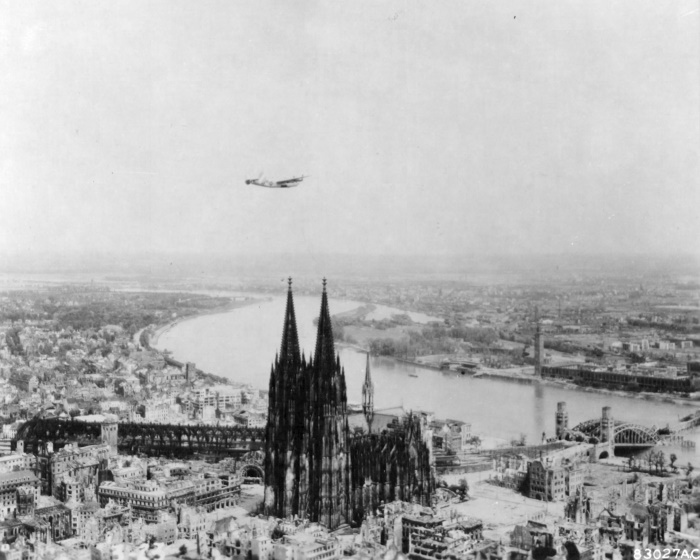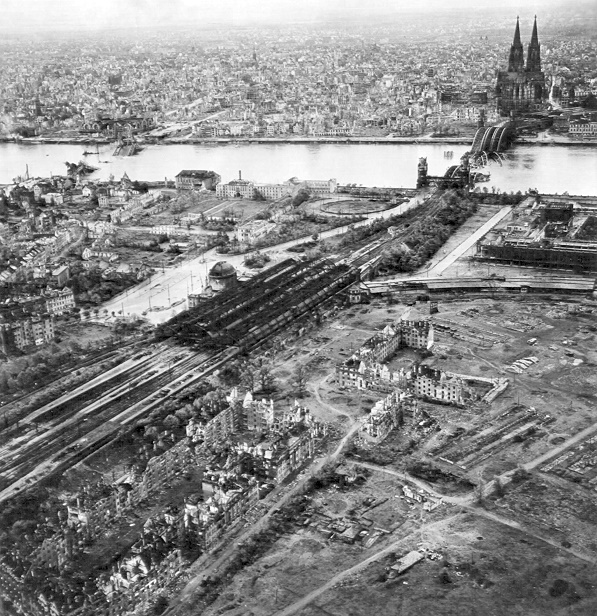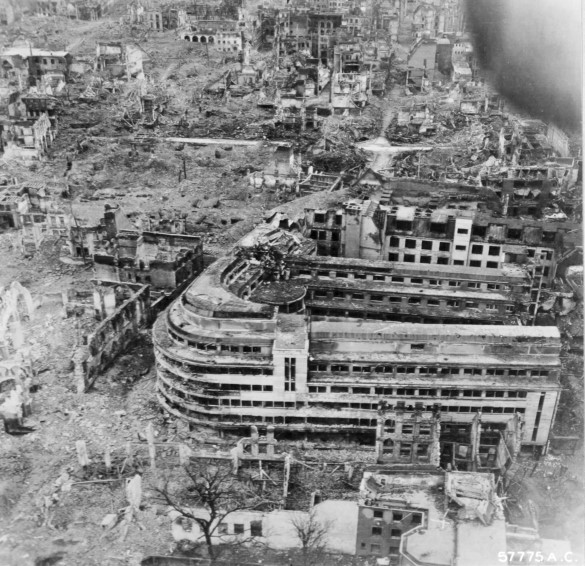The German city of Cologne was bombed in 262 separate air raids by the Allies during World War II, including 31 times by the Royal Air Force (RAF). Air raid alarms went off in the winter/spring of 1940 as enemy bombers passed overhead. However, the first actual bombing took place on 12 May 1940.
The First 1000 Bomber Rain in History
The most notable attack on Cologne was the first Allied 1,000 bomber raid on 30/31 May 1942. The RAF Bomber Command under the leadership of Arthur Harris was seeking a way to demoralize the German population and war effort. The War Department believed that they could overwhelm German night fighter and flak defenses by making a huge strike in a smaller 90 minute window.
Hamburg was the original choice for the attack, but was eliminated at the last minute due to poor weather conditions. Additionally, it was advised that Cologne would be a better target because of the RAF’s use of the GEE technology that allowed them to navigate and bomb more accurately, which couldn’t be accomplished with Hamburg because of the increased distance.
RAF Bomber Command drew additional bombers and pilots from nearly every available sphere in order to reach the 1000 plane mark for the operation. This task was made more difficult when, at the last days, RAF Coastal Command bombers were pulled from the operation. The Navy had decided that the propaganda benefits of the raid didn’t justify the decreased protection from U-Boat attacks that Coastal Command was responsible for.
As the RAF was in the process of transitioning away from 2 engine medium bombers to the heavy 4 engine craft of the Lancasters and Halifax bombers, the raid drew on over 300 of these larger capacity planes. In total, 1047 aircraft were used in the operation with a total of 868 striking the intended target area and 15 striking alternative targets.
Casualties were not excessive for the raid for a number of reasons. First, the box formation of the bombers allowed for better protection from night fighters. Additionally, the sheer numbers of bombers overwhelmed the fighter and flak defense net of the German Luftwaffe. Also, “intruder” raids were sent to other targets in order to keep the German night fighters occupied elsewhere and unable to be redirected towards Cologne.
In total the RAF lost 43 aircraft by British reports (44 by German tallies). Of those, only 22 were shot down in the vicinity of Cologne itself.
Devastation of the Raid
The raid on Cologne used mostly incendiaries and therefore, the majority of damage was not attributed the explosions themselves but to the fires that they started. The Cologne fire brigade authority reported over 5,000 non-residential buildings were damaged with 3300 of those destroyed. There were over 1700 fires classified as “large” by local authorities.
By war’s end the city of Cologne had seen damage of epic proportions rivaled, perhaps only by the infernos created by the bombing of Tokyo and other Japanese cities.
During the 1939 to 1945 period the Royal Air Force dropped 34,711 long tons of bombs on the Cologne.
